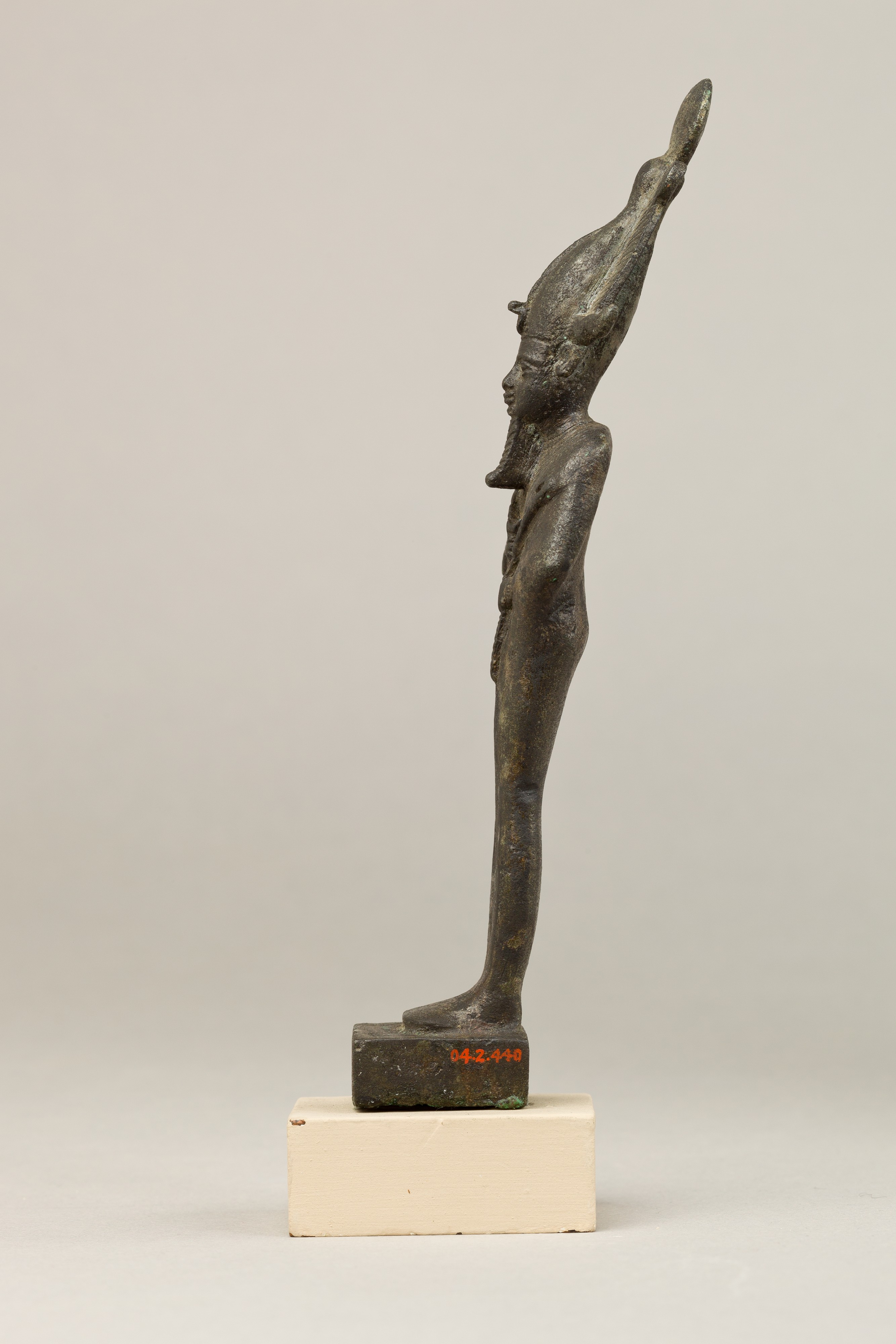Osiris
Late Period–Ptolemaic Period
Osiris, foremost of the Egyptian funerary gods and ruler of the underworld, stands upright and wears an atef crown with a sun disk on top and ram horns below. His facial features are sensitively modeled with plastic brows and thick, heavy eyelids. His close-fitting mummiform garment has a shallow stiff upper edge along the back of the neck, a feature that occurs with some regularity on this garment, but one with an unclear meaning. His hands and wrists, complete with bracelets, extend out from curved slits in his garment. He holds the royal crook and flail with his hands poised asymmetrically.
In general, Osiris statuettes were some of the most abundant temple offerings in Egypt by the first millennium B.C., reflecting both the god’s importance and changing cult practices that spurred the wide-scale dedication of deity statuettes. Many statues of Osiris were offered in temples and shrines belonging to him, but they have also been found in other contexts, for example near temples and shrines honoring other prominent deities or in animal necropoleis.
Due to rights restrictions, this image cannot be enlarged, viewed at full screen, or downloaded.
This artwork is meant to be viewed from right to left. Scroll left to view more.





